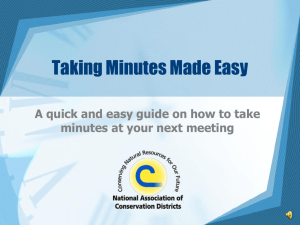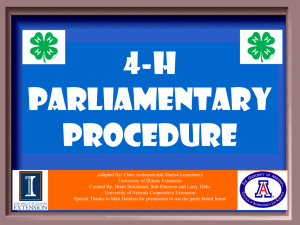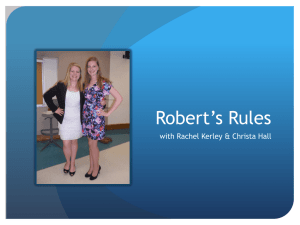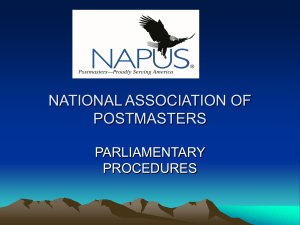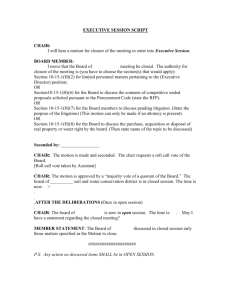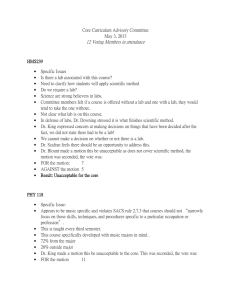Robert Rules of Order Summary
advertisement
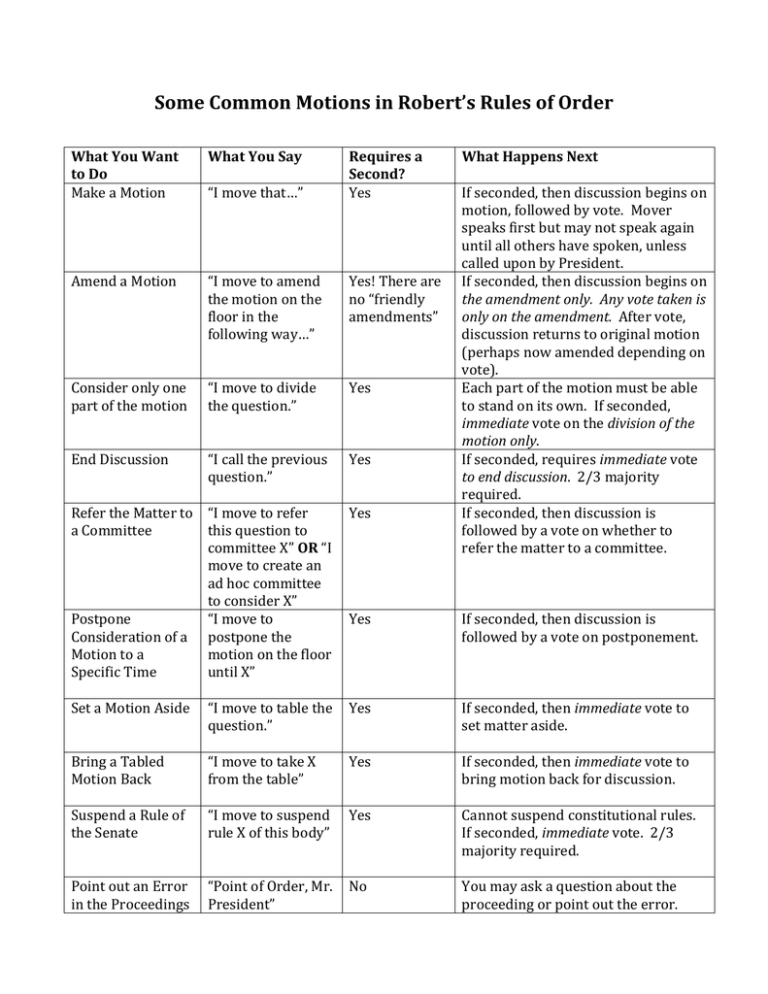
Some Common Motions in Robert’s Rules of Order What You Want to Do Make a Motion What You Say Amend a Motion “I move to amend the motion on the floor in the following way…” Yes! There are no “friendly amendments” Consider only one part of the motion “I move to divide the question.” Yes End Discussion “I call the previous question.” Yes Refer the Matter to “I move to refer a Committee this question to committee X” OR “I move to create an ad hoc committee to consider X” Postpone “I move to Consideration of a postpone the Motion to a motion on the floor Specific Time until X” Yes Yes If seconded, then discussion is followed by a vote on postponement. Set a Motion Aside “I move to table the question.” Yes If seconded, then immediate vote to set matter aside. Bring a Tabled Motion Back “I move to take X from the table” Yes If seconded, then immediate vote to bring motion back for discussion. Suspend a Rule of the Senate “I move to suspend rule X of this body” Yes Cannot suspend constitutional rules. If seconded, immediate vote. 2/3 majority required. Point out an Error in the Proceedings “Point of Order, Mr. President” No You may ask a question about the proceeding or point out the error. “I move that…” Requires a Second? Yes What Happens Next If seconded, then discussion begins on motion, followed by vote. Mover speaks first but may not speak again until all others have spoken, unless called upon by President. If seconded, then discussion begins on the amendment only. Any vote taken is only on the amendment. After vote, discussion returns to original motion (perhaps now amended depending on vote). Each part of the motion must be able to stand on its own. If seconded, immediate vote on the division of the motion only. If seconded, requires immediate vote to end discussion. 2/3 majority required. If seconded, then discussion is followed by a vote on whether to refer the matter to a committee. Some Robert’s Rules Essentials (The “Why” of Robert’s Rules / Parliamentary Procedure) What Is Parliamentary Procedure? It is a set of rules for conduct at meetings, which allows everyone to be heard and to make decisions without confusion. Why is Parliamentary Procedure Important? Because it's a time tested method of conducting business at meetings and public gatherings. It can be adapted to fit the needs of any organization. Today, Robert's Rules of Order newly revised is the basic handbook of operation for most clubs, organizations and other groups. So it's important that everyone know these basic rules! Parliamentary Procedure is the best way to get things done at your meetings and to ensure that everyone’s view point in the discussion is respected and treated fairly. But, it will only work if you use it properly. 1. 2. 3. 4. Allow motions that are in order. Have members obtain the floor properly. Speak clearly and concisely. Obey the rules of debate. Most importantly, BE COURTEOUS. The method used by members to express themselves is in the form of moving motions. A motion is a proposal that the entire membership take action or a stand on an issue. Individual members can: 1. 2. 3. 4. Call to order. Second motions. Debate motions. Vote on motions. The basic types of motions and related procedures are summarized on the reverse of this page. Once a motion has been thoroughly discussed it may be voted on. There are two other motions that are commonly used that relate to voting. 1. 2. Motion to Table -- This motion is often used in the attempt to "kill" a motion. The option is always present, however, to "take from the table", for reconsideration by the membership. Motion to Postpone Indefinitely -- This is often used as a means of parliamentary strategy and allows opponents of motion to test their strength without an actual vote being taken. Also, debate is once again open on the main motion. A Final Note: Please do your best as a Faculty Senator to be familiar with and prepared to use these basics of Parliamentary Procedure. When in doubt about a point of order or a senate process please rely upon the support of the Faculty Senate Parliamentarian. An electronic form of this document is available at the UAA Faculty Governance website. This document has been adapted from a web resource at: http://www.robertsrules.org/rulesintro.htm
